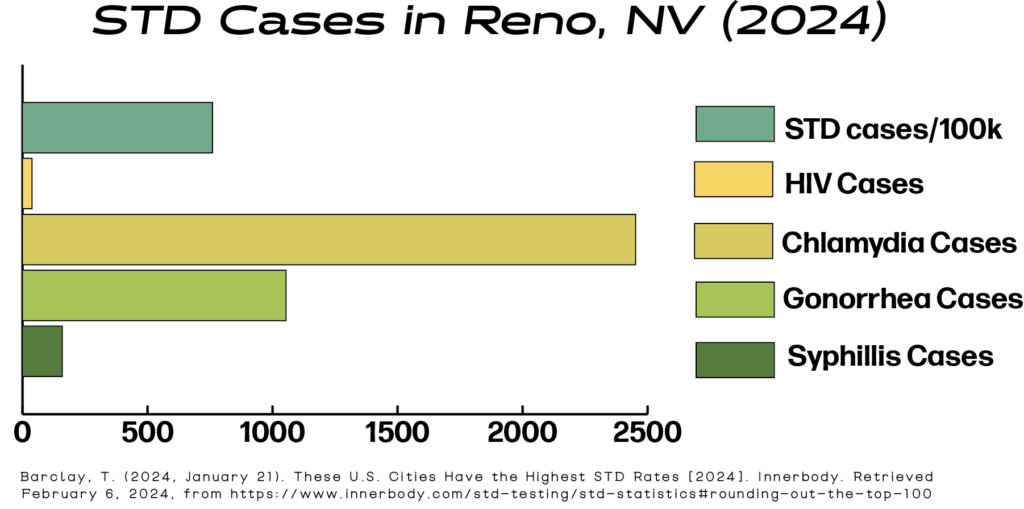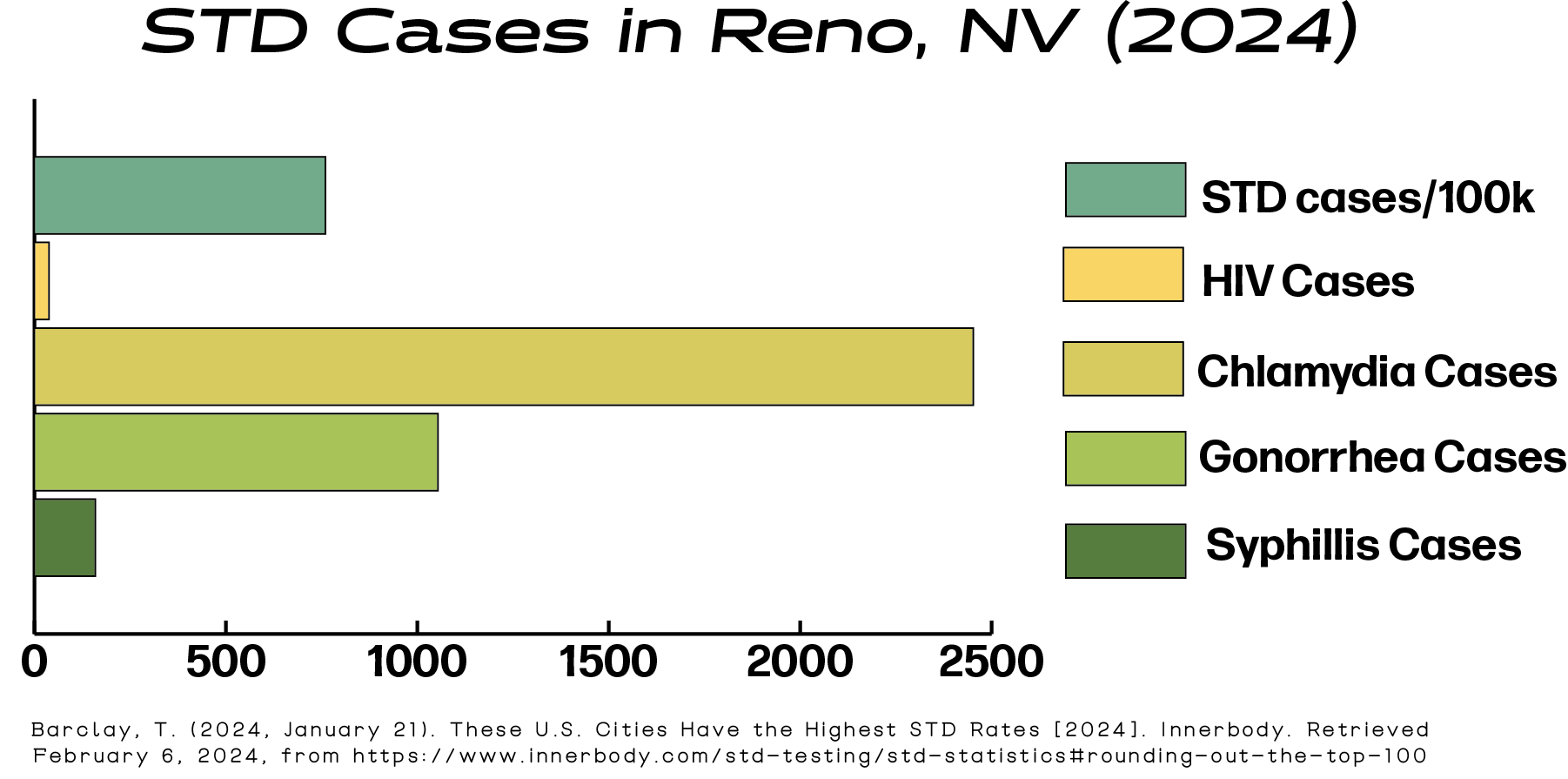Correction 3/13, 9:45 a.m.: “According to Northern Nevada Public Health data, chlamydia numbers have dropped from 1,902 in 2021 to 1,749 in 2023 and gonorrhea numbers dropped from 802 in 2021 to 421 in 2023, showing that numbers have been going down since the Innerbody study’s basedata was calculated.”
The 581 figure here is from only the third quarter of 2021 (July-Sept), not the entire year. The 1,749 figure is the year-to-date figure from Jan.-Sept. of 2023. So, in this instance you are comparing two separate sets of data (one quarter vs. three quarters of a year). If you compare the same sets of data, you’ll actually see a decrease in chlamydia. We reported 1,902 cases from Jan.-Sept. of 2021, which then dropped to 1,749 during the same time in 2023.
The home of the University of Nevada, Reno jumped onto the leaderboard of the top 100 cities with the highest sexually-transmitted disease rates, ranking at 69, according to a study done by Innerbody.

This was a significant jump, since the city was not included in the previous study, showing numbers have significantly grown in these 2021 statistics.
Cheryl Hug-English, the medical director of the university’s Student Health Center noted that the rates at which STIs are rising in the U.S. and Nevada are concerning.
According to data from the CDC in 2022, Nevada ranks in the top 10 for both gonorrhea and syphilis. The state also ranks 17 for chlamydia.
Innerbody obtained this data from their seventh annual STD study from the CDC’s 2021 data. They analyzed the data on a city-by-city basis to compile their list of the Top 100 cities with the highest STD rates.
“This emphasizes the pressing need for heightened attention and targeted interventions to address the growing public health challenge in the area,” Eric Rodriquez, CEO of Innerbody said.
The statistics rank Reno with 760 STD cases per every 100,000 people. Showing 38 cases of HIV, 2,452 cases of chlamydia, 1,054 cases of gonorrhea and 159 cases of syphilis. All of these STDs can have permanently-damaging effects and in some cases can result in death if untreated.
“It’s important for people to know about STD numbers because understanding the prevalence of sexually transmitted infections in different regions helps inform public health interventions and policies aimed at prevention and treatment,” Rodriguez said.
According to Northern Nevada Public Health data, chlamydia numbers have dropped from 1,902 in 2021 to 1,749 in 2023 and gonorrhea numbers dropped from 802 in 2021 to 421 in 2023, showing that numbers have been going down since the Innerbody study’s basedata was calculated.
The Innerbody study doesn’t specify age groups, but young adults, including college students, are often at higher risk of being infected, according to Rodriguez. He said factors including inconsistent condom use, multiple sexual partners and lack of access to healthcare services are factors that contribute to increased risk among this demographic.
The university also completed the National College Health Assessment survey in fall 2022, which compares the university to other campuses across the country in specific health areas. According to the sexual statistics of the NCHA survey, about 69 percent of the survey respondents had one sexual partner on campus, while only nine percent noted having four or more.

Hug-English encouraged limiting the number of sexual partners as a prevention to getting an STI, having a conversation about mutual monogamy and with potential sexual partners before becoming sexually active. Getting tested and knowing your own personal STI status is also an important step to prevention from STIs.
The number of participants that reported using protection during sexual activity “most of the time” or “always” in the past 30 days included about four percent for oral sex, 35.5 for vaginal sex and 20 percent for anal sex.
“The best safeguard against getting an STI is to use barrier protection such as a condom for each and every sexual encounter,” Hug-English said. “Oral contraceptives or IUDs do not provide protection against STIs.”
The university’s Student Health Center offers low-cost STI testing Monday through Friday, and it offers a limited number of free STI tests on a weekly basis by appointment only. HPV vaccinations are also available.
“Most sexually transmitted infections can be treated if identified early,” Hug-English said. “If not treated, they can lead to long term consequences such as infertility, organ damage, certain types of cancer or death.”
Jaedyn Young can be reached at jaedynyoung@sagebrush.unr.edu or on Twitter @jaedyn_young3.







